Our customers say that Automation Workshop is a number one tool for their automation needs. It is very easy to use and it has virtually no learning curve · Automation benefits
This step-by-step tutorial will guide you through downloading, installing, and basic configuration of Automation Workshop. Also, a simple Task will be created to demonstrate how awesome the Automation Workshop solution is.
How to download?
The very first step to start using Automation Workshop is downloading the software. Automation Workshop is available for both 32-bit and 64-bit versions of Microsoft Windows.
tl;dr
Choose the Universal installation package that will automatically detect and install an appropriate 32 or 64-bit edition on your Windows server or workstation.
32 or 64-bit?
To check your System type, click the Start button, type About your PC and press Enter. While 32-bit version of Automation Workshop works on all systems, using 64-bit version on 64-bit Windows systems may optimize its performance and resources.
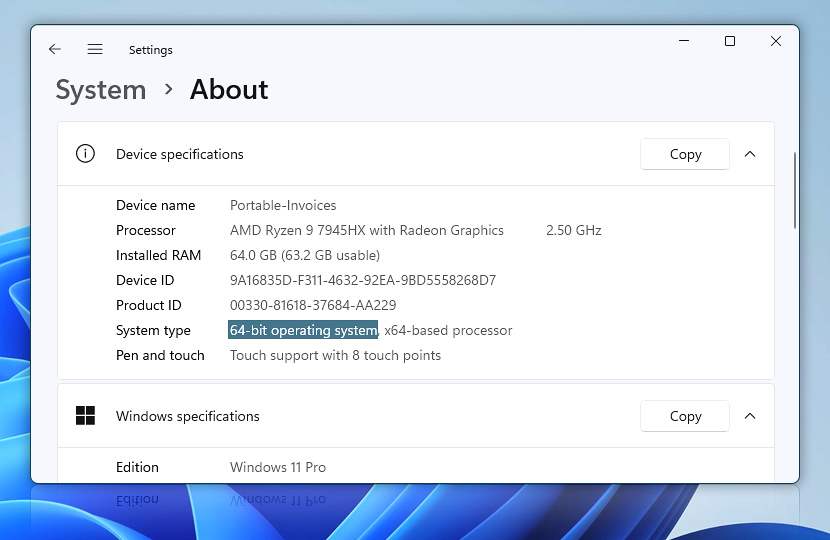
When sure about your Windows version, go to the Downloads, and choose the appropriate installation package. 32-bit version of Automation Workshop is provided in self extracting executable (.exe), ZIP archive (.zip) and Microsoft Installer (.msi) format. 64-bit version is available in Microsoft Installer (.msi) format.
Again, you can always download the Universal installer that will automatically detect and install the most suitable version for your system.
How to install?
Locate the downloaded installation file and start the setup of Automation Workshop. This will open the Setup Wizard which will lead you through a few simple installation steps.
Automation Workshop requires no additional third-party libraries, databases, or other software, making it 100% ready for deployment. The installation process is so straightforward that it typically takes about 15 seconds.
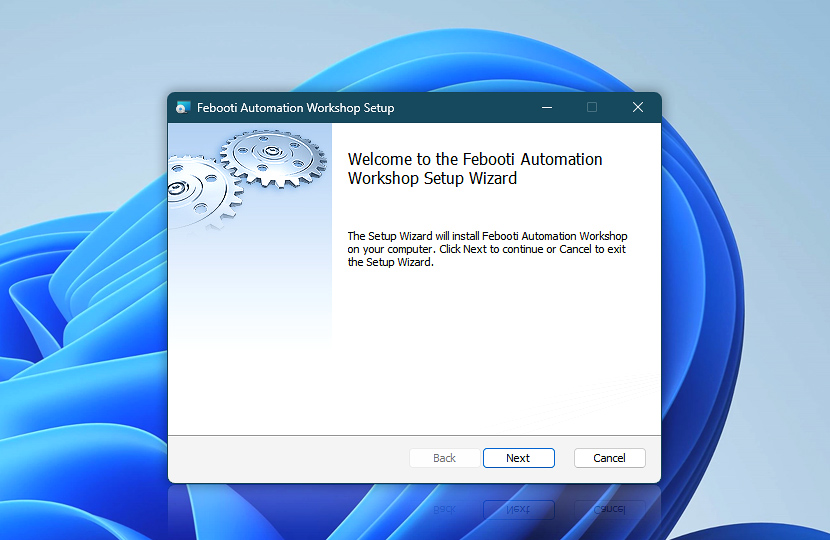
The setup is initialized and Automation Workshop is ready for being installed.
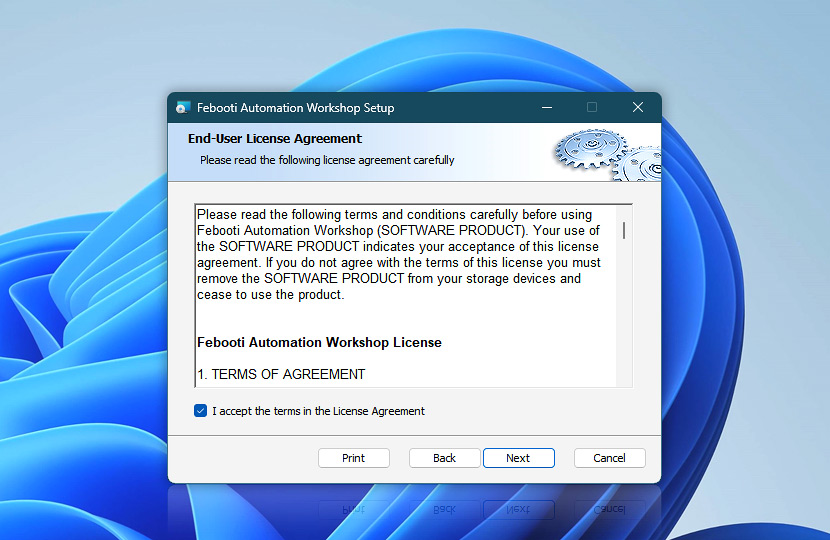
Read and decide whether to accept the terms of agreement of using Febooti Automation Workshop.

Enable or disable software update notifications and choose whether to create a desktop shortcut.
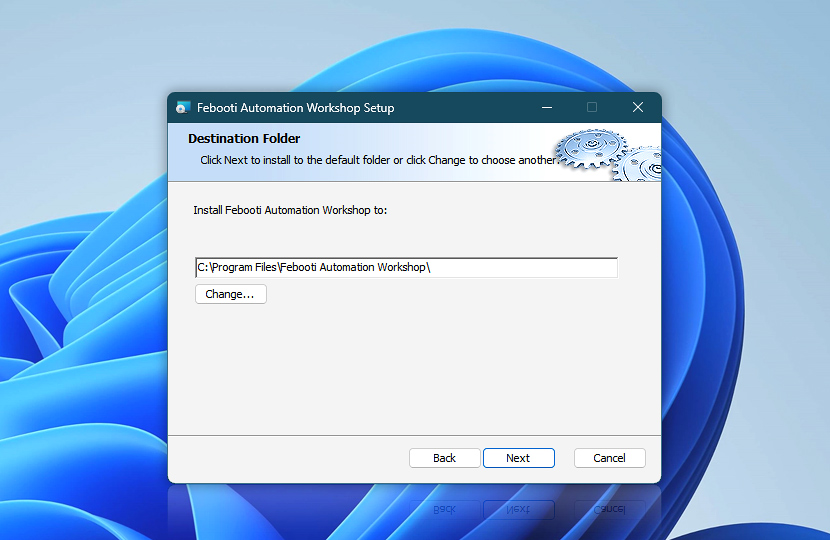
View or modify the Febooti Automation Workshop application folder path.
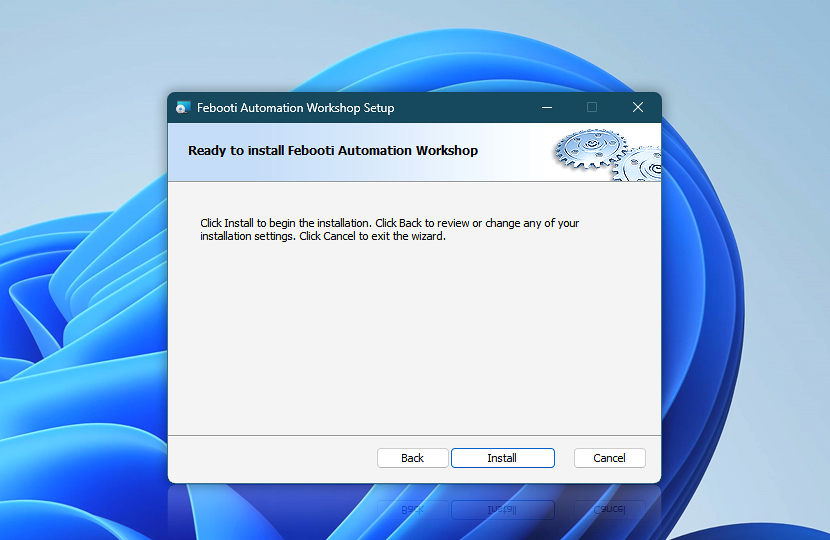
Click the Install button to actually start deploying Automation Workshop files and adding the application to the system.
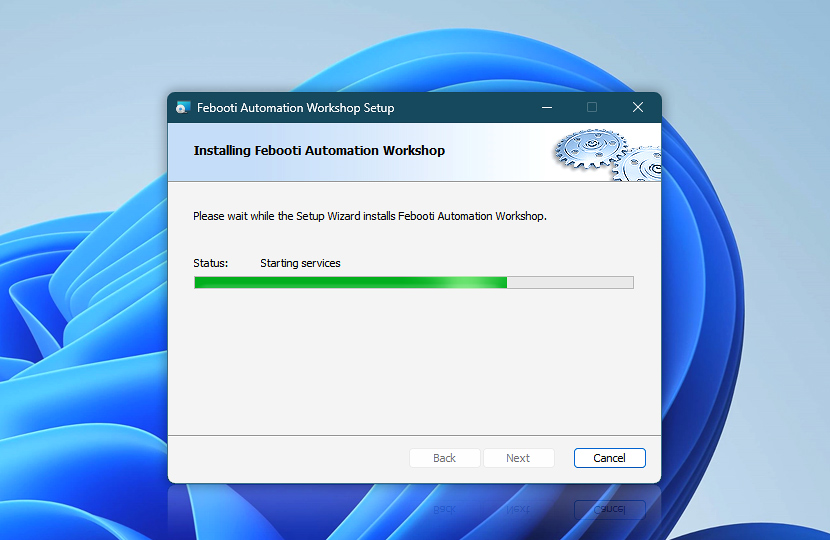
Automation Workshop Services are also started during this step.
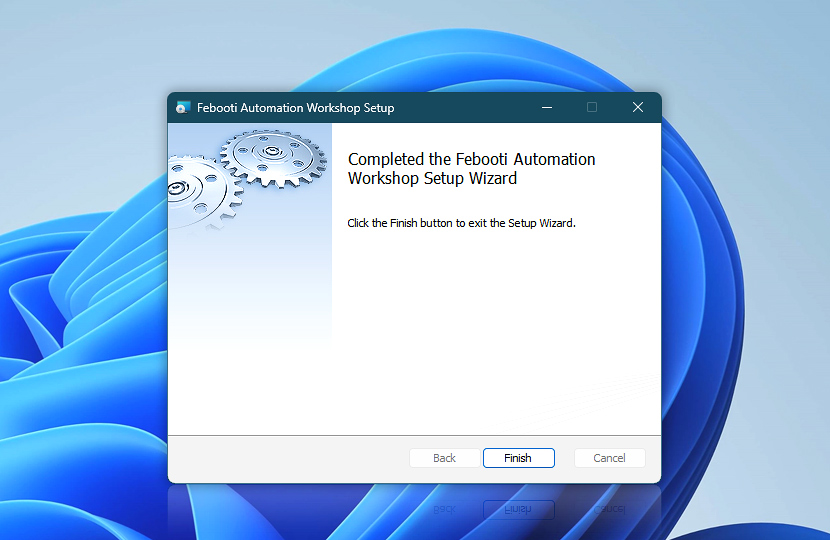
Congratulations! Febooti Automation Workshop has been installed in specified folder. Click the Finish button to exit the setup application.
Start Automation Workshop
After being installed, Automation Workshop Services are already running. However, Automation Workshop Manager has to be opened manually (as any other application on your computer).
Locate Automation Workshop in Start Menu or double-click its desktop shortcut to run the graphical user interface (GUI) of the software · See state-of-the-art automation tools
How to create a Task?
Choose New Task from File menu to open the Task Wizard. Task Wizard is a tool that allows creating and configuring Automation Workshop Tasks. During the process the user is guided through seven steps of Task configuration.
The navigation through the steps is done by using Next and Back buttons. You can return to one of previous steps and modify the settings.
Welcome
Get acquainted with basic concepts of the Task creation.
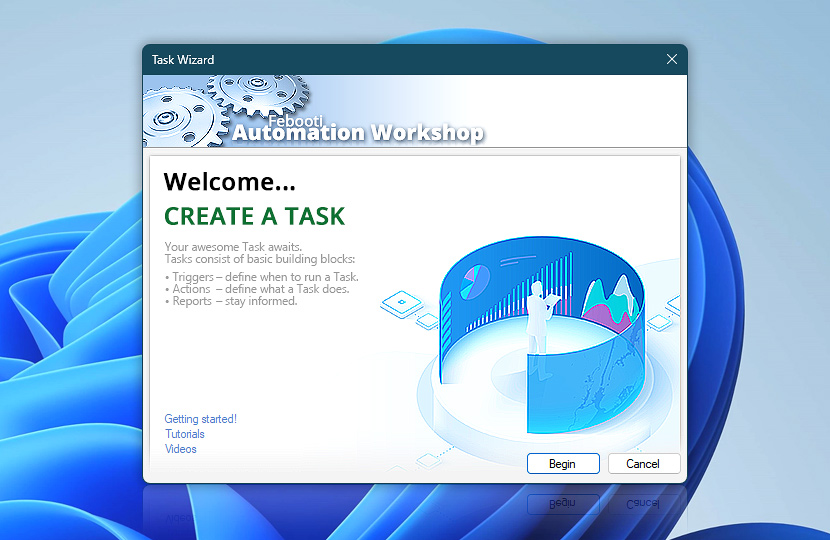
Triggers
Here user can add Triggers (conditions that, when met, automatically execute the Task).
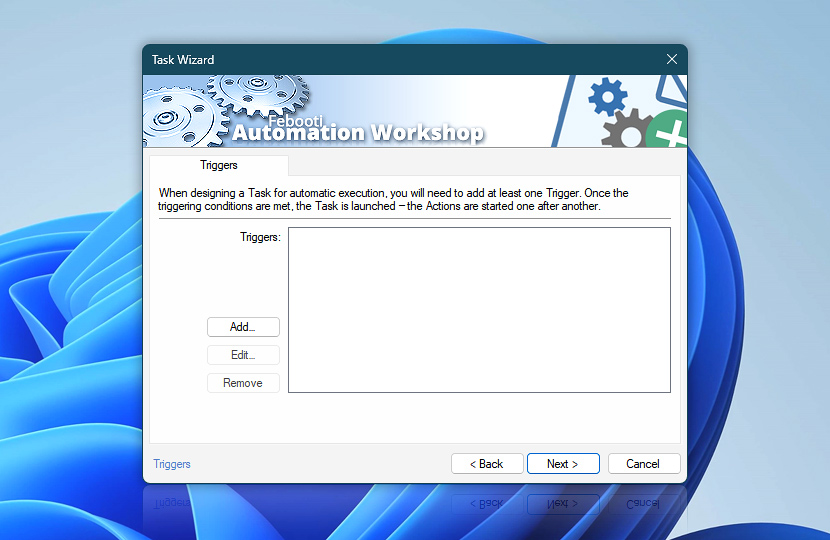
Actions
Here user can add Actions (operations that are actually performed upon Task execution).
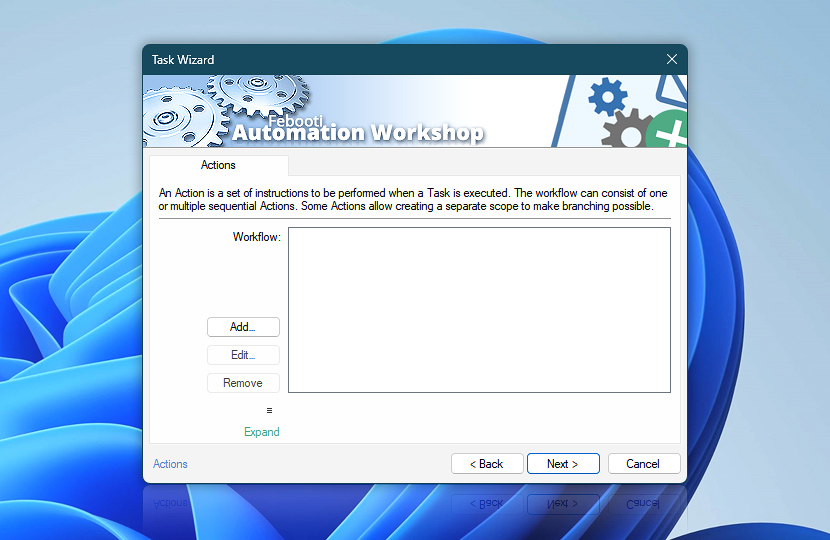
Run As
Specify user credentials to be used when executing the Task.
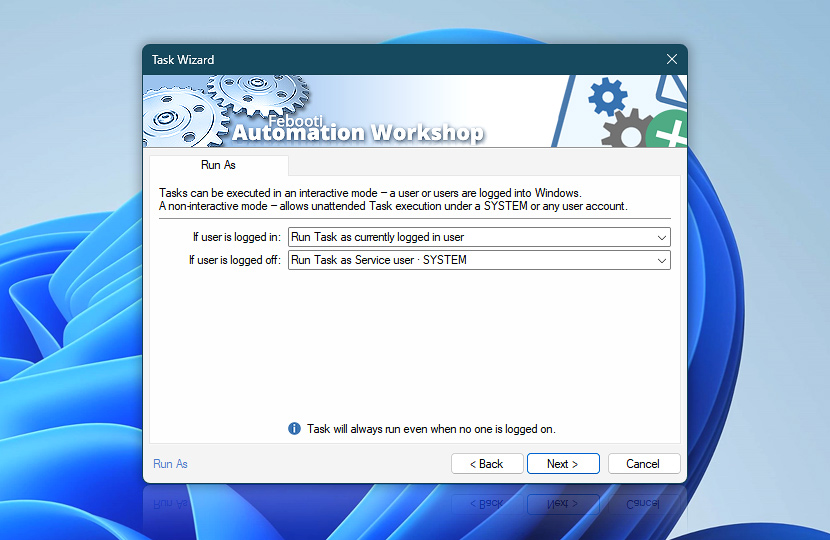
Reports
Choose whether successful or failed Task execution will be reported to specified email.
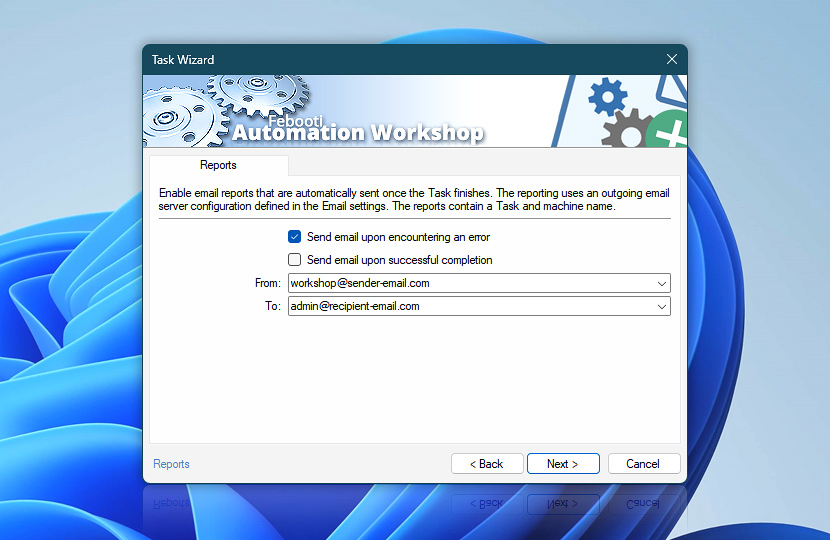
Task
Give Task a recognizable name and, optionally, write a description.
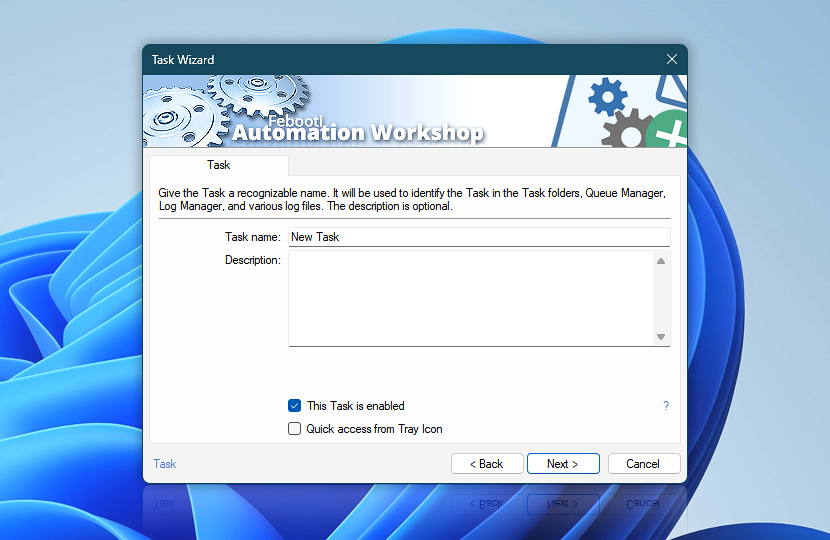
Finish
Congratulations! The Task has been created.
Push the Finish to save and activate the Task or visit Advanced options.

Create a simple Task
Let us create a simple Task which displays Hello, World! message when manually started. Tasks that are started manually do not require Triggers (automatic execution conditions), so let us skip directly to the Actions step.
Once in the Actions tab, we have to add an Action which will display the Hello, World! message. Push the Add button and choose Show Message Action from Dialog Boxes category.

As you can see, the Dialog tab contains two parameters, namely, Title that specifies the message window title and Message to display that specifies what will be shown.
Put cursor into the Title parameter input and type Hello, World!. Put a cursor into the Message to display input field and type Hello again there. The configuration of the Action is essentially completed at this point. However, let us see another available options:
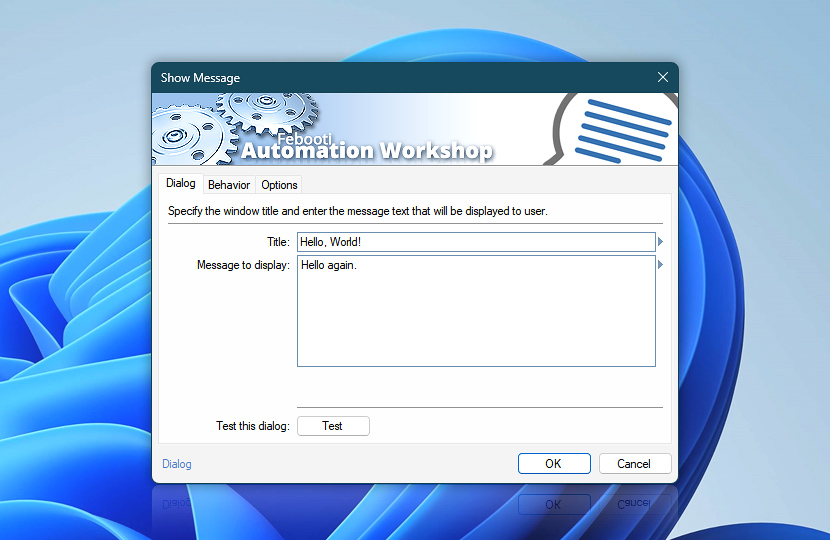
Variable Wizard
While the cursor is still in the Message to display input field, notice the Variable Wizard button (on the right side of the field). It opens Variable Wizard which can provide dynamic values instead of fixed ones (including the output of previous Triggers and Actions, if they are associated with the same Task).
For example, the Date returns current date which is dynamic value since it is different every day or, in other words, the dynamic value is contingent upon the date when the Task is started. Variable Wizard can return a number of both system specific and Task specific dynamic variables. Let us replace the text Hello again with current date.
![Show message · [Date]](https://i.febooti.com/i/automation-workshop/tutorials/show-message-date.jpg)
Erase the Hello again text. Then click the Variable Wizard button. Choose the Date variable from the Date & Time category and click OK.
More options
Most important options of all Actions and all Triggers are always put on the first tab. However the rest of the tabs may include other options that need to be specified or can be useful.
The Behavior tab of Show Message Action allows specifying whether the message window will be closed automatically and how the Task will be continued. By default the message window stays on screen indefinitely until it is closed by user.
If you enable the Continue automatically after x seconds, the message window will be closed automatically after the specified time has passed. On Ok button option allows specifying whether the Task will be continued or stopped after the Hello, World! message has been displayed.
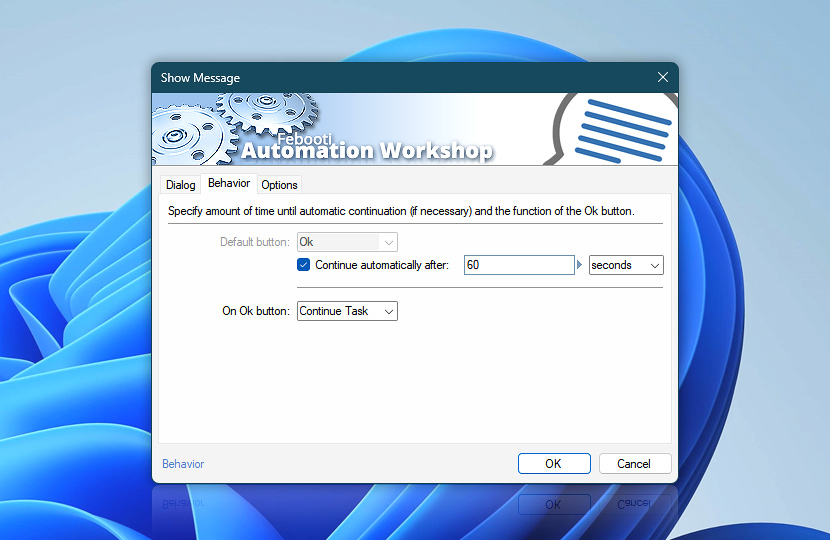
The Options tab of Show Message Action allows choosing whether to display icon along the message text and its type, such as information, question, warning, error or none. You can test these settings from the Dialog tab, by pressing Test button.
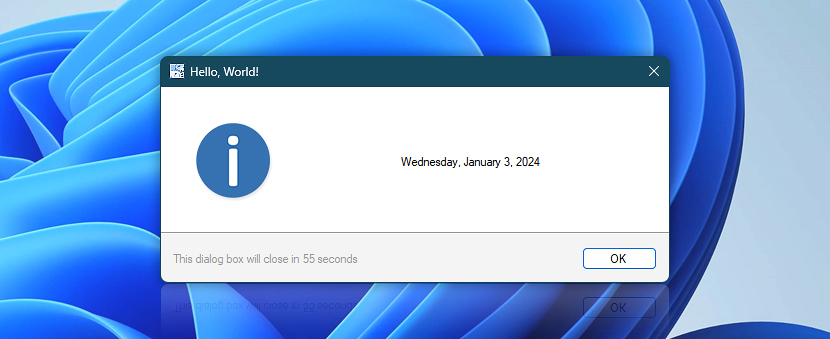
Run As
When a Task is executed, it uses specified user account to perform its Actions. For example, a folder or network share may or may not be accessible depending on access rights of particular user. Generally you can choose to execute the Task from different user accounts depending on whether some user is logged in or not when the Task is started.
In our case, though, this Task can only be started manually due to lack of Triggers. Which also means that this Task will always be executed when some user is logged in. For this Task the default setting to Run Task as currently logged in user will suffice.
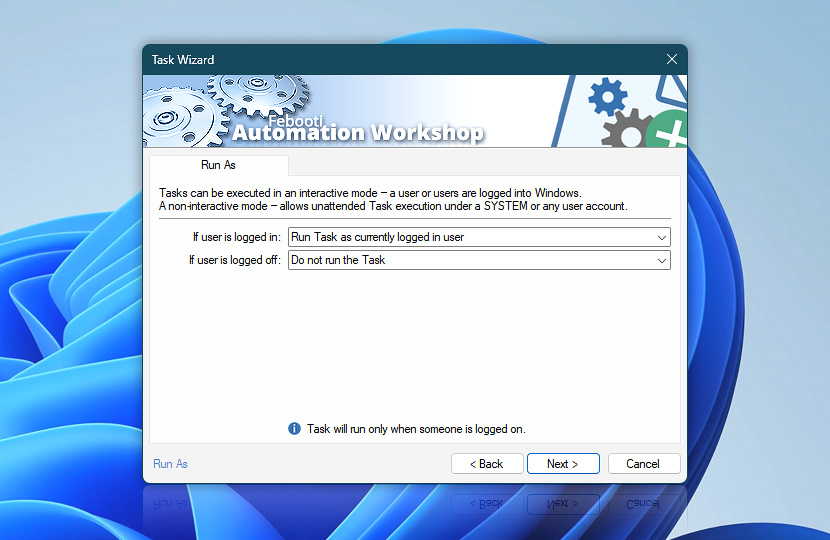
Reports
When the Task completes (either successfully or with error) it can send an email report. Mark the necessary checkboxes and specify From and To addresses for email report delivery.
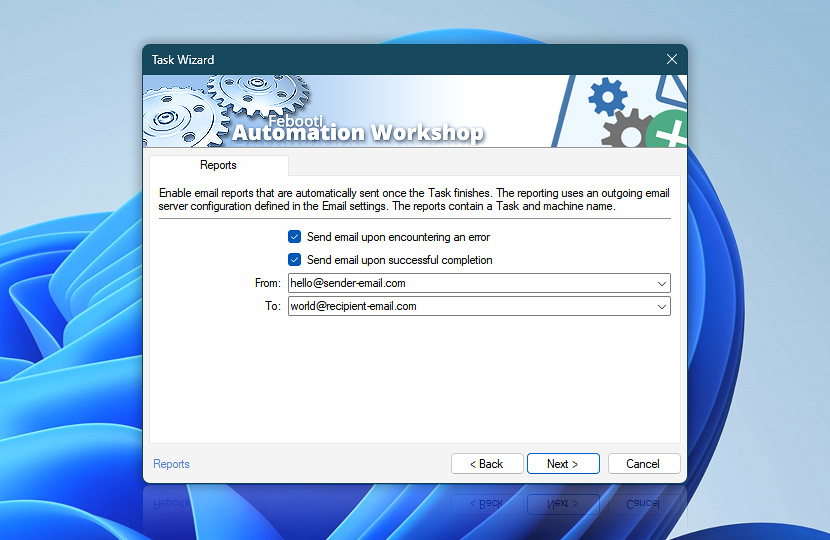
Task
Give Task a name which will let you identify the Task later in the Task Pane of Automation Workshop Manager (e.g., Hello World). You can also write a short description if necessary. This Task is enabled setting determines whether the Task will be operational immediately after finishing this Task Wizard.
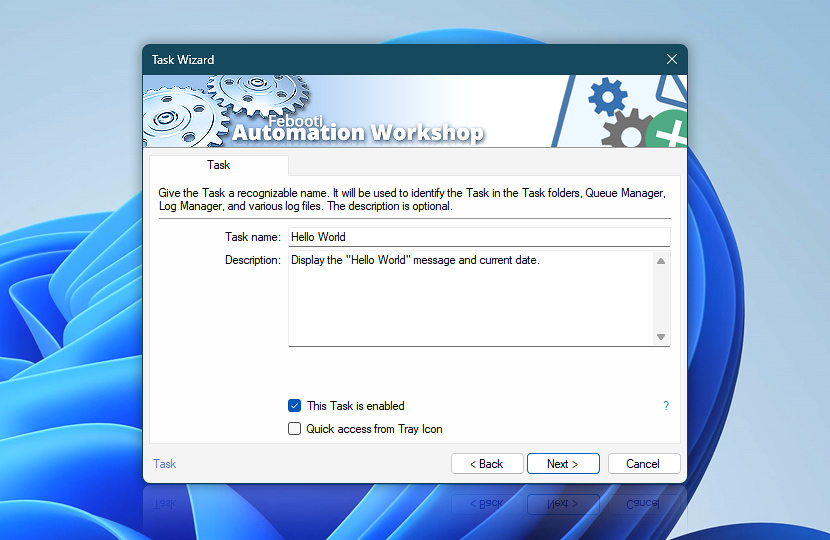
Proceed to the Finish step and click the Finish button to save and activate the Task. The Task Wizard closes at this point and the user is returned to Automation Workshop Manager.
The Task Pane now should contain the newly created Hello World Task. You can run the Task by either selecting the Task icon in Task Pane and pushing the Run button on the toolbar or choosing the Run Task option from the context menu.
SMTP server
Setting the default SMTP server. Start the Hello World Task. Task execution details are displayed in the Log Pane of Automation Workshop Manager. Note the "Could not send notification email: could not connect to SMTP server. The requested address is not valid in its context" error being displayed in the Log Pane.
In order to fix this error and avoid similar ones in the future, you should set up the default SMTP server which will be used by default for all email related operations (unless specified otherwise in each Task). Quick troubleshooting:
Open Options from Tools menu and go to the Email tab. Enter your SMTP server with authentication settings and credentials (if necessary).
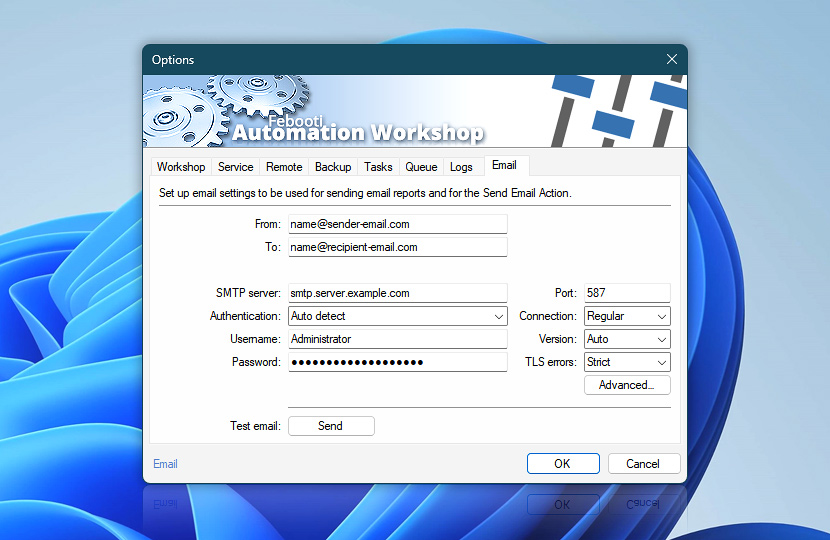
Provide From and To email addresses that will be used by default to send the Task completion notifications. Now, go to the Advanced email options and change character set and priority settings if necessary.
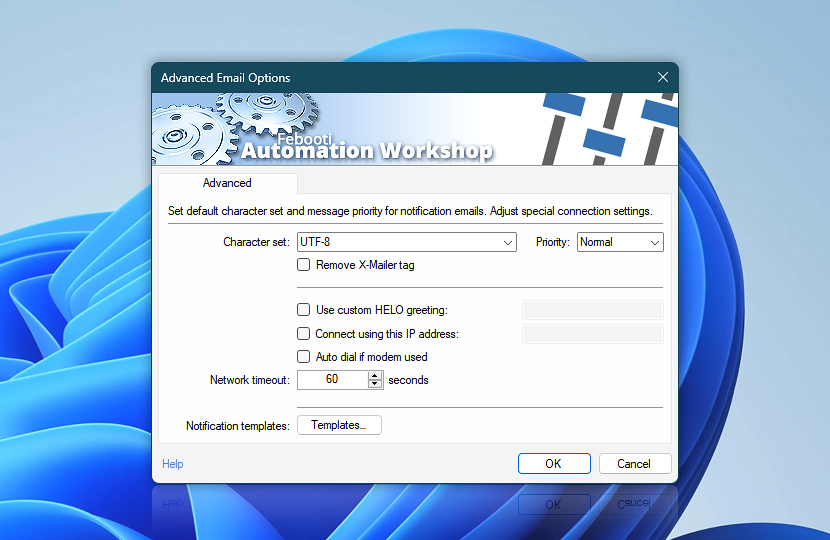
Return to Email tab and push Send button to send test email. If test email successfully arrives to specified mailbox, SMTP server and notification email addresses are correctly set.
Log Manager
We have already seen Log Pane that displays current information and error messages without any filtering. However, there is more advanced log file viewer available in Automation Workshop.
You can access it by clicking the Log button in Automation Workshop toolbar or from Tools menu. Log Manager shows all events for specified period of time. Additionally, log entries can be sorted, filtered by date, by event type and otherwise. Read more on using Log Manager.
Triggers
The Hello World Task is a simple one. It even does not include any Triggers. Triggers are sets of criteria that, when matched, automatically start the Task.
Automatic Task execution is the main advantage of using Automation Workshop. The Task can be started when Automation Workshop detects some specific file activity, on predefined schedule or some other system event. Learn more about Triggers.
Actions
This Task performs only one operation, namely, displays Hello, World! text on screen. There are many more Actions that allow not only to perform numerous file operations, but also send email, execute external programs or commands in Windows command prompt as well as even automatic Task management functions as well. See the growing list of available Actions.
Further help
While using Automation Workshop, note the Help links virtually everywhere in the software. These links open context relative help page in your default browser. In most cases the information provided is directly connected with settings or other features of Automation Workshop currently in front of you.
Otherwise, feel free to visit the main section of online help to access the comprehensive knowledge base dealing with every aspect of the program, and learn more about rich functionality of Automation Workshop in online knowledge base · Automation videos
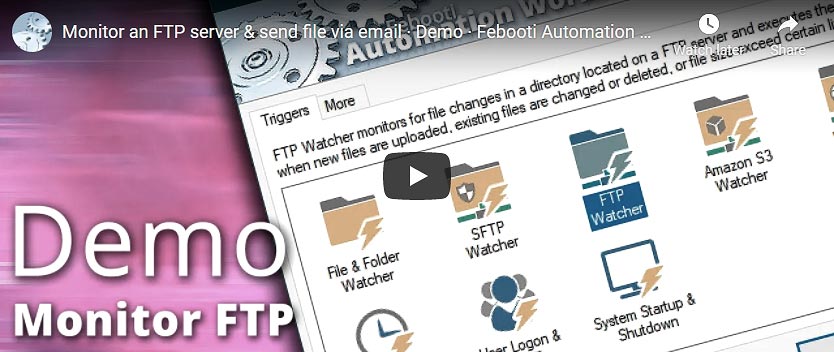
Conclusion
This guide had shown how to download, install, and run Automation Workshop. A very basic Task is created to illustrate the main features of the software.
The Task created displays the Hello, World! message in a window (with current date). Some basic insight into the idea of dynamic values of Variable Wizard has been given along with information how to configure the default SMTP server for automatic email notifications.
Help at your fingertips…
If you have any questions, please do not hesitate to contact our support team.
